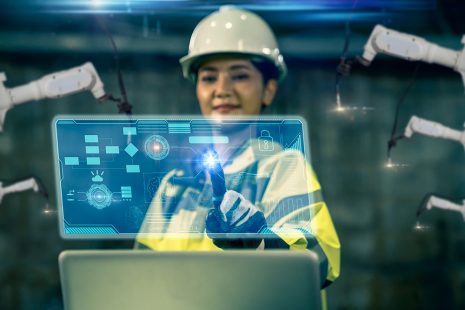Why IoT Devices Will Comprise the Front Line of Data Systems for the Industrial Metaverse
 With the strong and reliable foundation of cloud computing, the Internet of Things is bringing substantial value to numerous vertical sectors. The fast, interconnected system of edge devices that collects and distributes data via the cloud to servers in data centers around the world is driving everything from personal and business security, manufacturing, transportation, health care, retail and many others that touch our lives directly.
With the strong and reliable foundation of cloud computing, the Internet of Things is bringing substantial value to numerous vertical sectors. The fast, interconnected system of edge devices that collects and distributes data via the cloud to servers in data centers around the world is driving everything from personal and business security, manufacturing, transportation, health care, retail and many others that touch our lives directly.
These same edge devices and cloud applications that are bringing us so many services we now take for granted will comprise the “first responders” in the next rendition of the internet, which has been dubbed Web 3.0, or the metaverse. New companies and thought leaders are lining up to provide products and services for the new network, which is being built now and is expected to be mainstream by the last couple of years in this decade.
The usage numbers are staggering: In May 2022, IoT Analytics reported that the global number of connected IoT devices was using 14.4 billion active endpoints. By 2025, the analyst firm projects that number will climb to more than 27 billion IoT connections.
Web 2.0 transitioning to Web 3.0 and the metaverse is already being used routinely in key industrial sectors, and the opportunities to prepare and add value through these technologies– is chronicled in a new position paper developed by Molex and Arrow Electronics entitled “Unleashing the Power of the Industrial Metaverse: Are You Ready?” The paper offers a realistic assessment of how industries will be using the industrial metaverse and Web 3.0 to add new value and additional customers to their communities.
It’s a look into the future that’s intriguing as well as enlightening.
IoT has Come of Age
Like artificial intelligence, the IoT has come of age in this new century. In addition to equipping people, homes and cities with smart devices, autonomous vehicles and 24/7 security, the industrial side of the IoT has brought us new efficiencies and cost savings in manufacturing, warehousing and shipping. This is readily apparent in vertical markets such as automotive, healthcare, scientific, retail, construction and numerous others.
IoT devices that are already in place – sensors, videocams, solar-powered items in remote locations, and numerous others – will be among those enabling powerful new experiences in the metaverse. Here are just a few:
- Potential customers will be transported to virtual locations to view properties, products and services;
- Marketing and sales teams will routinely use augmented or virtual reality videos as key tools;
- Business will be transacted through new decentralized financial channels using global cryptocurrencies;
- Avatars will represent people in meetings and interact with customers in real time; and
- A slew of immersive new customer-experience options will be made available.
Quality of Connectivity Will be a Key Component
By innovating a wide variety of connectivity products – many of which are custom-designed for specific use cases by some of the largest organizations in the world – Molex is prepared to help in the transition of Web 2.0 into Web 3.0, in which much greater digital payloads will travel through the network and connectivity components.
“We’re changing everything from new product development through the physical commercialization aspect and ultimate fulfillment — engaging directly with customers,” Molex’s Chief Digital Officer Mike Giresi said in the paper. “At Molex, one of our greatest assets is our engineering capability. We continuously invest in envisioning the long-term view and asking ourselves how we can create the innovations that provide more strategic value to customers we serve today and tomorrow.”
Molex is a technology company, not just a physical component maker, Giresi said. “We provide tremendous value in terms of the experience that people receive through these products we help design and deliver,” he added. “We have a point of view on where this is all going based on our decades of experience and enduring relationships with hundreds of customers. We are in a prime position to strategically collaborate and support clients as we all jointly prepare for the benefits of the industrial metaverse.”
The future is unfolding, in many cases right before our eyes. “If we think about the normal technology architecture, and how that supports process execution and employee capability, we can look at it differently,” Giresi said. “How people get work done today is very different from how they got it done five to 10 years ago. So we have to approach that with a very creative value contribution mindset that starts with how to do our jobs differently and better. We ask: How can we build the right capabilities and how can we position our customers to achieve value through new technologies and processes to enable that?”
The metaverse and the industrial metaverse are already increasing collaboration and accelerating product design cycles in a diverse set of industries. Learn how your business can capitalize on these trends by downloading the cosponsored Molex and Arrow report and registering for the upcoming webinar to dive deeper into the insights gained from the report with top metaverse experts. Fasten your seatbelts, it’s about to get interesting.